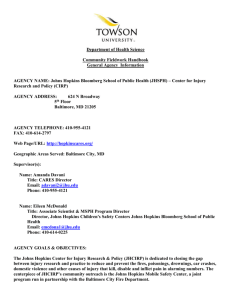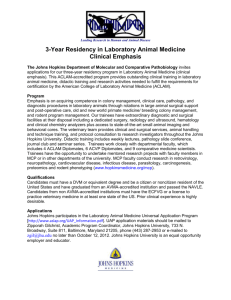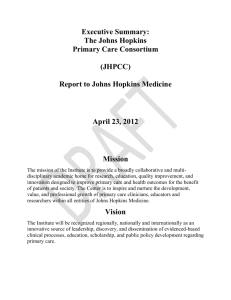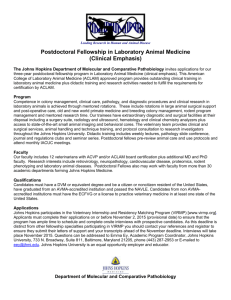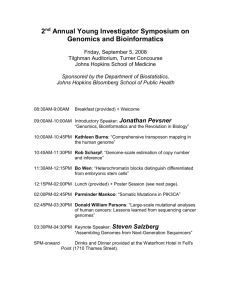PowerPoint Presentation - Global Tobacco Control
advertisement
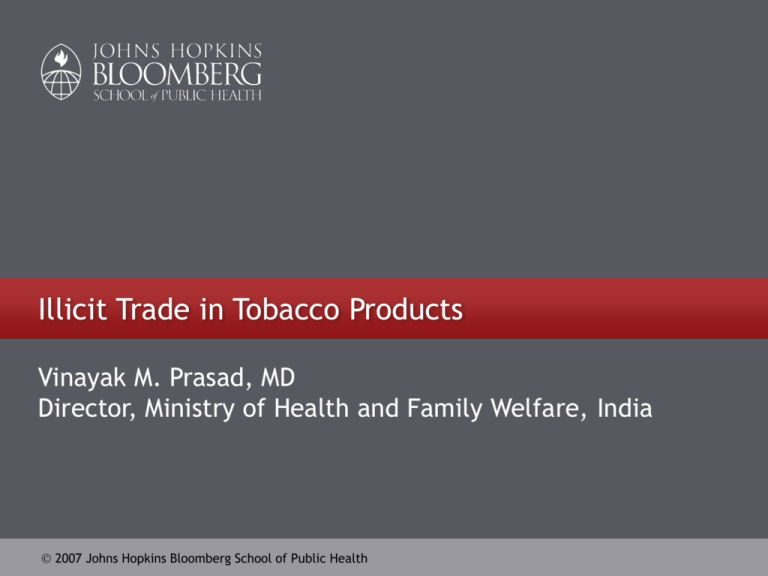
Illicit Trade in Tobacco Products Vinayak M. Prasad, MD Director, Ministry of Health and Family Welfare, India 2007 Johns Hopkins Bloomberg School of Public Health Section A Illicit Trade and Public Health: General Overview 2007 Johns Hopkins Bloomberg School of Public Health Learning Objectives What is illicit trade? How illicit trade impacts on public health? What contributes to illicit trade of tobacco? Country case studies How can illicit trade be controlled? Globally accepted strategies 2007 Johns Hopkins Bloomberg School of Public Health 3 Illicit Trade: Definition Article 1 World Health Organization (WHO) Framework Convention on Tobacco Control (FCTC): “Any practice or conduct prohibited by law and which relates to production, shipment, receipt, possession, distribution, sale or purchase including any practice or conduct intended to facilitate such activity” Source: World Health Organization. (2003). 2007 Johns Hopkins Bloomberg School of Public Health 4 Why Bother with Illicit Trade? “Tobacco smuggling undermines national pricing policies, deprives governments of revenues used to combat smuggling, permits tobacco companies to subvert international cooperation in tobacco control and above all, undermines legal restrictions and health regulations, such as those that deal with health warnings and sales to minors.” —Dr. Derek Yach, WHO’s Executive Director, August, 2002 Source: World Health Organization. (2002). 2007 Johns Hopkins Bloomberg School of Public Health 5 Why Bother with Illicit Trade? Public health impacts Access to cheap tobacco Adversely affects tobacco control measures Economic impacts Increases health care costs Loss of revenue Increase in crime 2007 Johns Hopkins Bloomberg School of Public Health 6 What Leads to Illicit Trade? Price-tax differentials Poor enforcement capacity Revenue administration/customs Poor paying capacity of individuals who are addicted to tobacco 2007 Johns Hopkins Bloomberg School of Public Health 7 FCTC Article 15 Recognizes elimination of illicit trade as essential to tobacco control Suggests legislative, executive, administrative and other measures E.g., Marks and numbers, tracking and tracing, exchange of information, etc. Text source: World Health Organization. (2003); Image source: World Health Organization. (2005). 2007 Johns Hopkins Bloomberg School of Public Health 8 Country Experiences Raising or lowering taxes: enforcement? Canada Spain U.K. and France Bhutan India 2007 Johns Hopkins Bloomberg School of Public Health 9 Country Experiences Canada Lowering taxes did not deter evasion/smuggling Spain Increase in taxes did not increase smuggling as enforcement action was substantially improved U.K. and France The higher taxes in the U.K. vis-à-vis France created a greater incentive to smuggle 2007 Johns Hopkins Bloomberg School of Public Health 10 Bhutan December, 2004: ban on manufacture/sale The first country in the world to do so The benefits have been marginal—why? Porous Indo-Bhutan land border Result: thriving black market for tobacco Lesson learned: bans will not work in isolation without intercountry strategies 2007 Johns Hopkins Bloomberg School of Public Health 11 India In 2002 to 2003, India’s share (488,130 tonnes) was approximately 7.5% of world’s consumption of unmanufactured tobacco* Non-cigarette forms constitute 4/5th of consumption (contrary to global trends) Tobacco consumption—high prevalence (47% males; 14% females)† Source: *United States Department of Agriculture, Foreign Agricultural Service. (2003); †The Tobacco Atlas, 2 nd Edition. (2006). 2007 Johns Hopkins Bloomberg School of Public Health 12 Types of Tobacco Use in India Source: National Sample Survey, India, 55th Round. (2000). 2007 Johns Hopkins Bloomberg School of Public Health 13 Tobacco Taxes in India (in Millions of USD) 2003-2004 2004-2005 2005-2006 1099.0 1198.87 1422.0 Bidi 54.4 55.6 47.2 Chewing tobacco 122.6 124.0 130.0 Cigarettes Source: Global Youth Tobacco Survey. (2006). 2007 Johns Hopkins Bloomberg School of Public Health 14 Trend of Illicit Indian Trade: Cigarettes Cigarettes Multiple tax structure Cheaper/smaller cigarettes: less tax Shift in trend from Bidi to low cost cigarettes Industrial licensing from government Control of the manufacture/supply trade by government Less incentive for illicit trade/smuggling Smuggling to Bhutan from India Smuggling from Bangladesh to India Free Trade Agreement (FTA) with Sri Lanka Foreign Direct Investment (FDI)/Special Economic Zone policy: could make India the manufacturing hub for the world 2007 Johns Hopkins Bloomberg School of Public Health 15 Trend of Illicit Indian Trade: Chewing Tobacco Chewing tobacco India: Oral cancer widespread > 30% of tobacco consumed is chewed Contrary to evidence of widespread consumption—static revenue collection Rampant evasion/illicit trade/illicit manufacturing of chewing tobacco > 700 cases of evasion of excise duty, involving $100 million USD (2005-2006) High tax incidence (33%) Poor enforcement/corruption No licensing/no tracking 2007 Johns Hopkins Bloomberg School of Public Health 16 Trend of Illicit Indian Trade: Bidis Bidis > 50% of tobacco consumed in India Poor man’s cigarette—negligible tax No documented report of illicit manufacturing; evasion of domestic taxes No reports of smuggling to other countries Poorly regulated 2007 Johns Hopkins Bloomberg School of Public Health 17 India: Trend of Illicit Trade No clear estimates of smuggling Open land borders (more than 5,000 kilometers) Free movement of people and goods between countries Smuggling reported from India to Bhutan, Myanmar, Pakistan, and Nepal Largely associated with bootlegging Recent reports of involvement of a few organized syndicates (Dawood Ibrahim) 2007 Johns Hopkins Bloomberg School of Public Health 18 India: Trend of Illicit Trade Within India there are . . . Best practices of tobacco control for the organized sector of cigarettes Poor control for chewing tobacco Poor policies for Bidis Indicates the need for a more comprehensive approach to tobacco control within the country in terms of taxation, trade, economic policy, and enforcement policy 2007 Johns Hopkins Bloomberg School of Public Health 19


